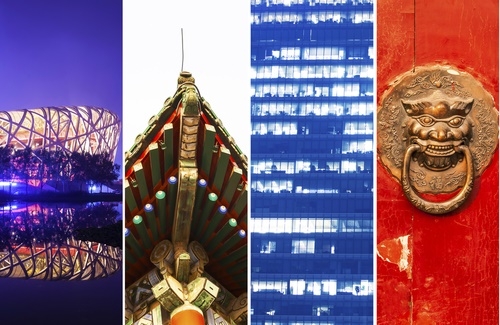
By Siah Hwee Ang*

By now the thinking around China as more than a single market has started to sink in.
Slowly but surely, the concept of “entering Shanghai and Beijing” as a synonym for “entering the Chinese market” will go away too.
When this happens, a host of question marks start to appear. Where is the next best city for a firm to locate in China? How much do we know about the other Chinese cities beyond Shanghai and Beijing? Does the fact that New Zealand has consulate-general offices in Guangzhou and Chengdu mean anything?
A good solution to these lingering questions is to find out how China can be clustered so that it is easier for firms to have specific cities targeted for their markets.
Well, a solution of some sort is starting to appear, thanks to the Chinese government’s efforts in its reforms.
Free trade zones
The first free trade zone in China was set up in Shanghai in September 2013.
All hopes were pinned on the opening of the Chinese market through this channel.
Yet, while uptake of participation in the free trade zone is high, the relatively long “negative list”—the list of industries where participation has been restricted—has somehow put a dent in the much anticipated initiative.
The good news is that the policies surrounding participation are constantly evolving as China continues to open up for inward investment.
December 2014 saw the launch of three other free trade zones in China, namely Guangdong Province in South China, Tianjin Municipality in North China, and Fujian Province in South China.
These will be modeled on Shanghai’s pilot free trade zone, with new initiatives introduced based on local characteristics. The free trade zones typically cover about 120 square kilometres in area.
These free trade zones were carefully selected, with Guangdong serving as a good linkage with Hong Kong and Macau while Fujian acting as a liaison with Taiwan.
More will follow. Seven other provincial governments have applied to set up free trade zones this year. Notably, the inland provinces of Hubei, Shanxi and Gansu.
Free trade zones are natural targets for foreign companies to have a foot in the door in some of these upcoming regions/cities.
Regional blocs
But setting up a free trade zone is not the only way for Chinese regions to grow.
In fact, given that there is a queue for setting up a free trade zone, some regions might be better off looking for a Plan B—by being part of a cluster.
This year sees the rollout of the plan to integrate Beijing with its neighbours Tianjin and Hebei province, also known as the “Capital Economic Circle”.
Combined together, the cluster has a population of more than 100 million and gross domestic product (GDP) of 6.65 trillion yuan in 2014 (equivalent to NZ$1.37 trillion). This accounted for nearly 10.5% China’s total GDP, though the area only accounts for 2% of the country’s land area. The foreign trade volume of the region comes close to 15% of China’s total.
The Beijing-Tianjin-Hebei cluster is the third most robust city cluster after the Yangtze River Delta and Pearl River Delta clusters.
Tianjin is expected to facilitate the growth of the cluster now that it is hosting a free trade zone.
Meantime, another urban cluster on the mid-section of the Yangtze River has also been approved. The plan aims to develop urban centres around Wuhan in Hubei, the Changsha-Zhuzhou-Xiangtan city group in Hunan province, and around Poyang Lake in Jiangxi.
And with the plan for the Chengdu-Chongqing cluster to be considered for approval this year, there would be five major clusters by year-end.
And like Tianjin, some of these cities involved in the clusters are also applying to set up free trade zones.
Towards defining your Chinese market
The development of free trade zones and clusters in China is on the fast track.
It’s clearly not easy to identify particular regions/cities to target given the degree and pace of movements.
Yet, there are signs that some regions/cities get mentioned many more times than others.
Further, these developments should be considered in light of the Silk Road Economic Belt and the 21st Century Maritime Belt.
As much as we worry that we might be confused by these developments, overall it’s a good thing that China is developing infrastructures so that the Chinese market for foreign firms will, in future, not be restricted to mainly cities, but to clusters and zones. Learning about the market might also become easier.
---------------------------------
Professor Siah Hwee Ang holds the BNZ Chair in Business in Asia at Victoria University. He writes a regular column here focused on understanding the challenges and opportunities for New Zealand in our trade with China. You can contact him here.

We welcome your comments below. If you are not already registered, please register to comment.
Remember we welcome robust, respectful and insightful debate. We don't welcome abusive or defamatory comments and will de-register those repeatedly making such comments. Our current comment policy is here.